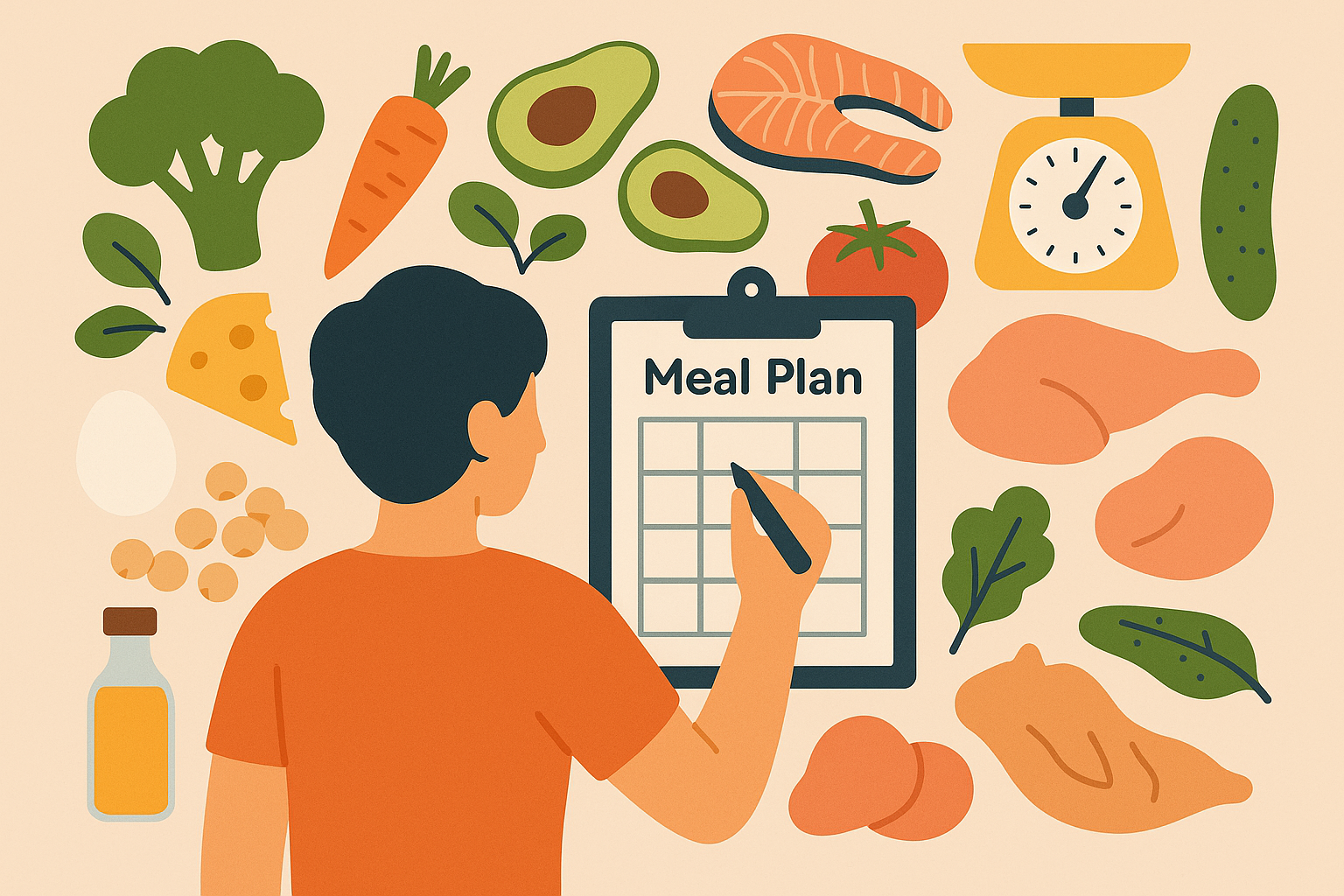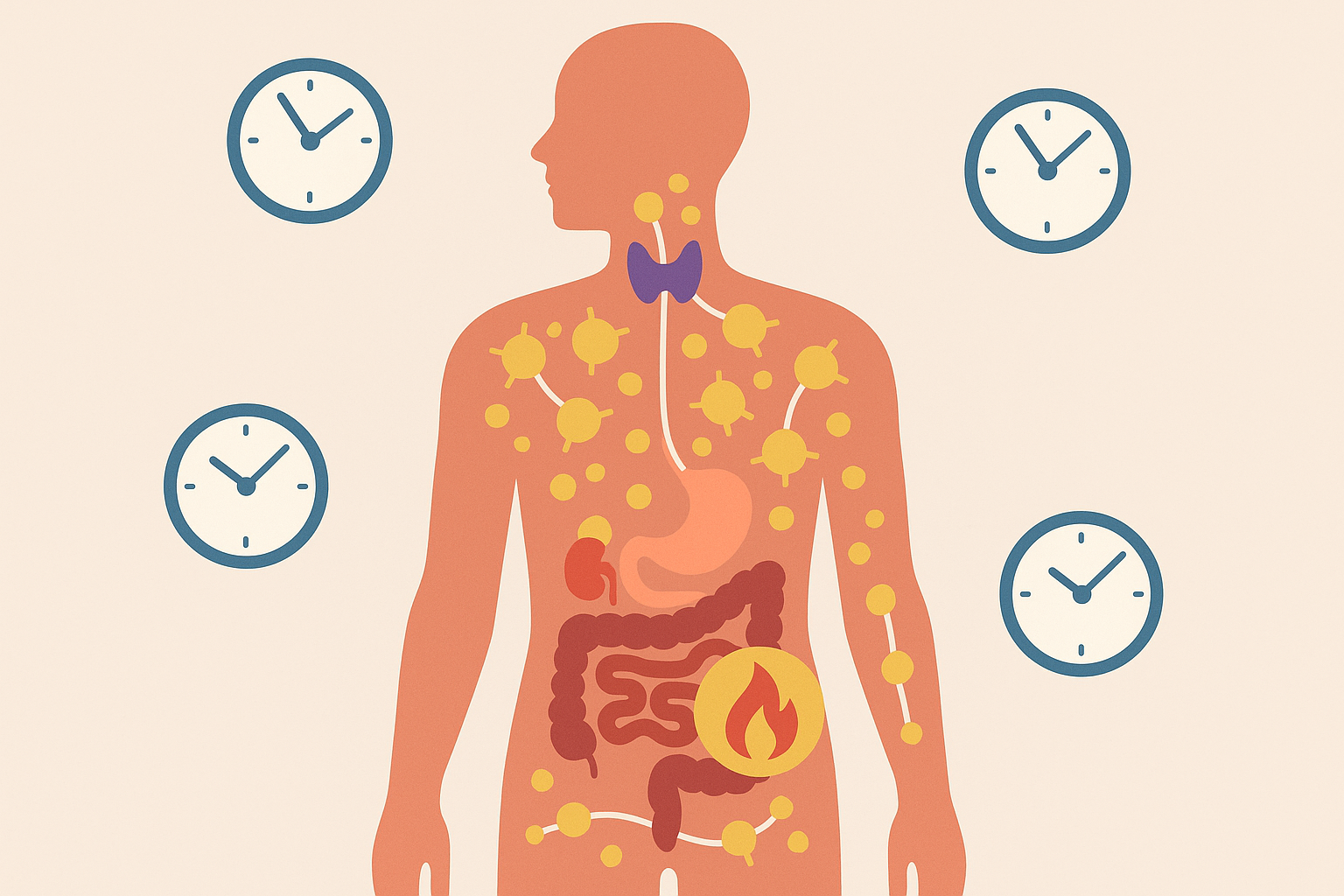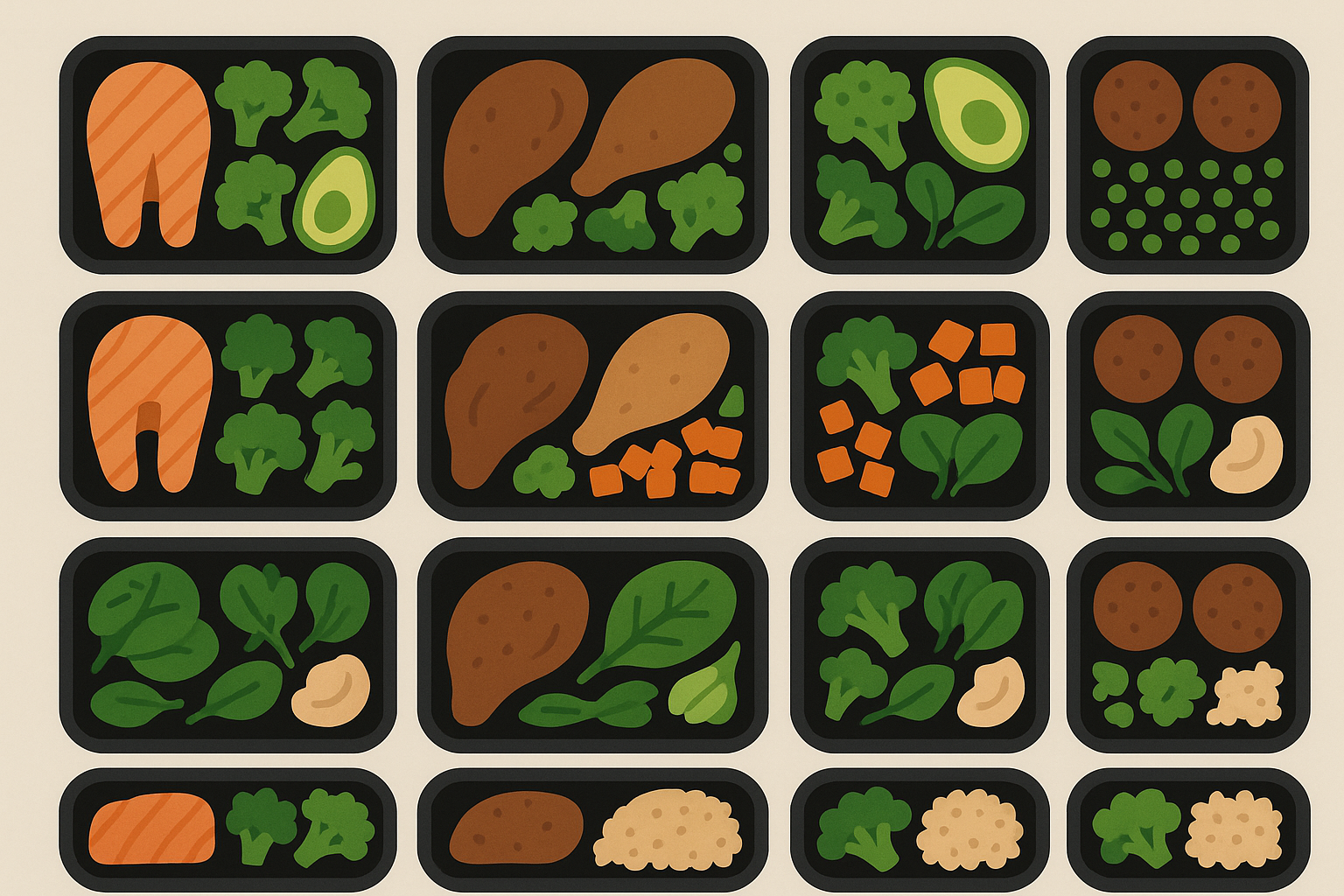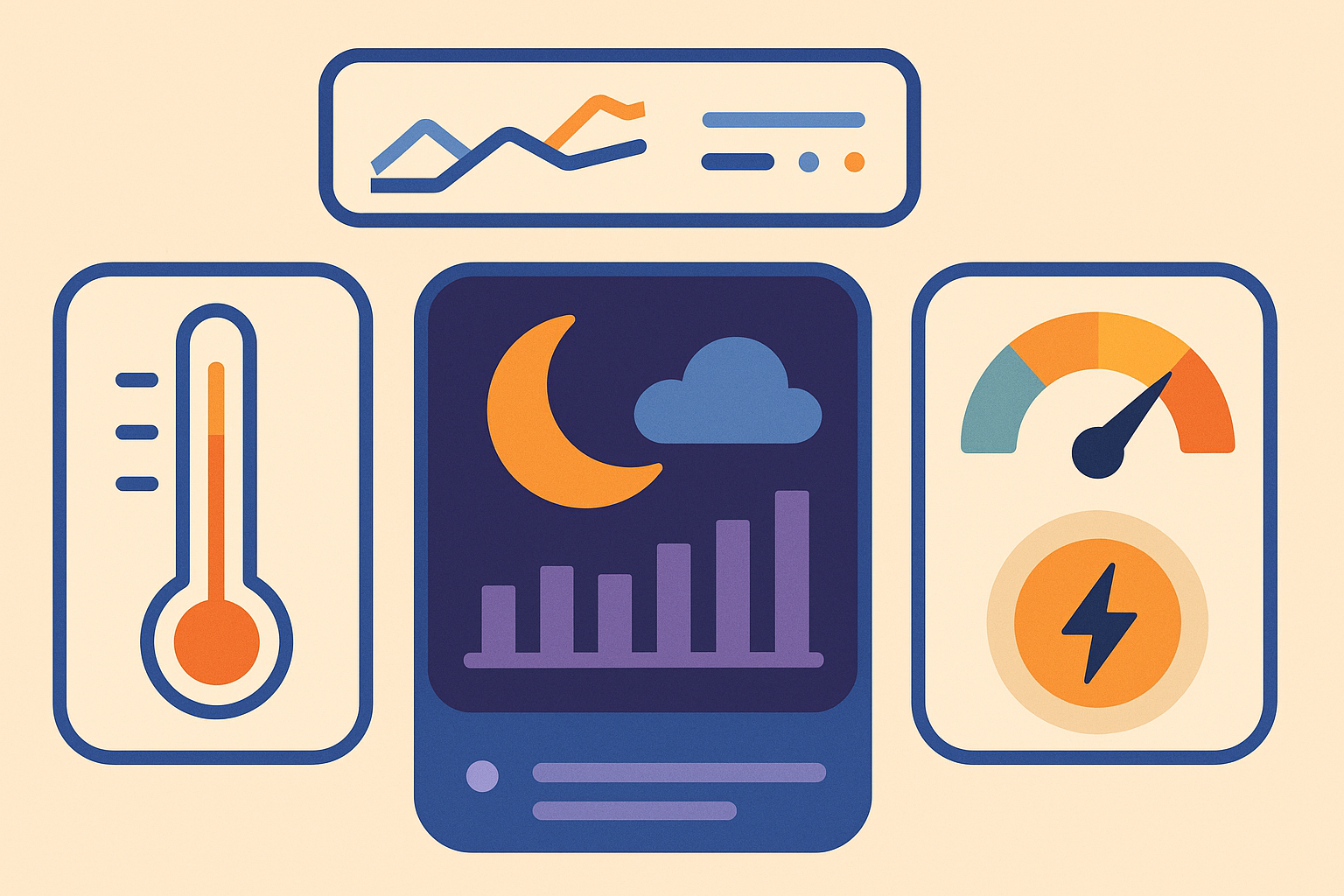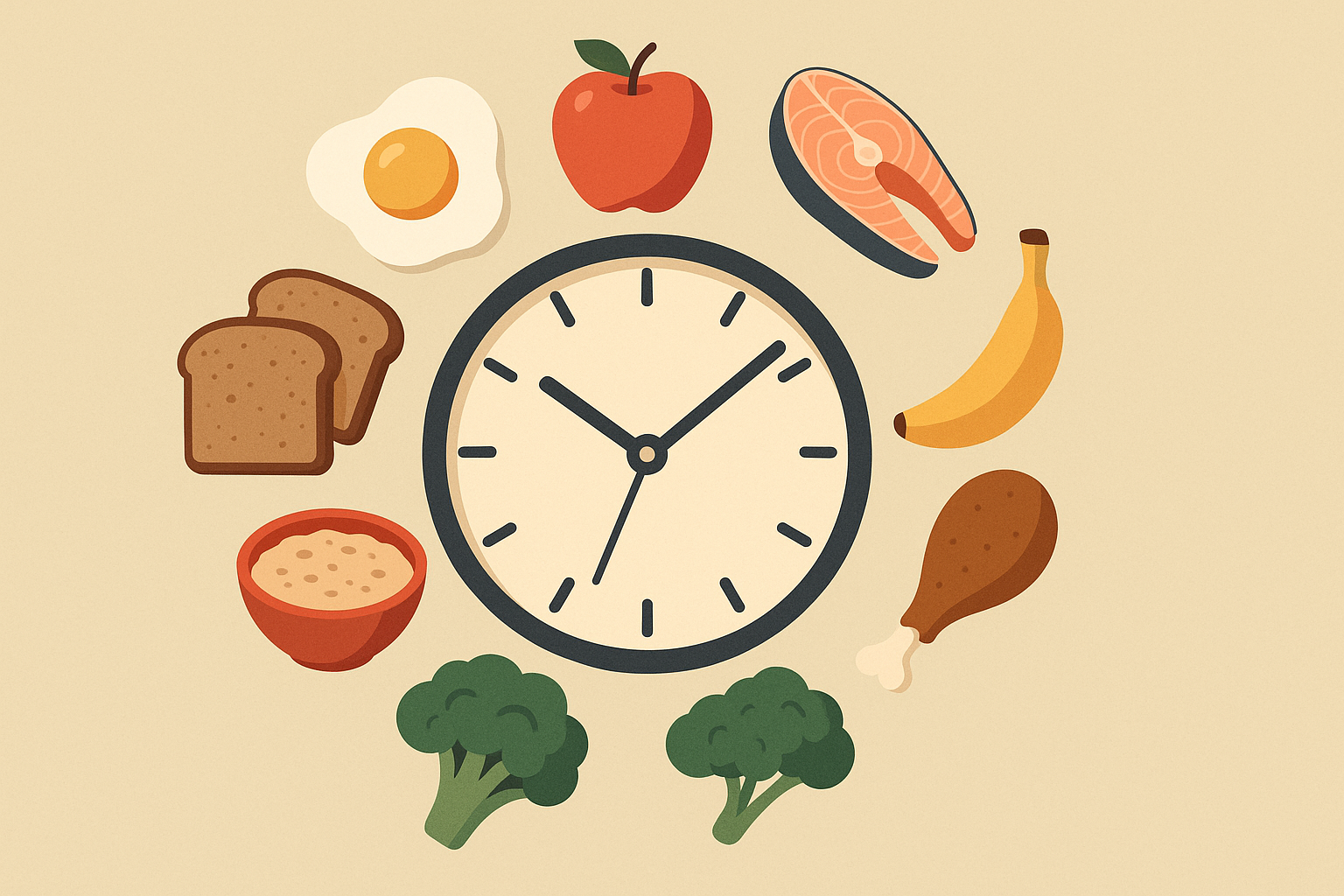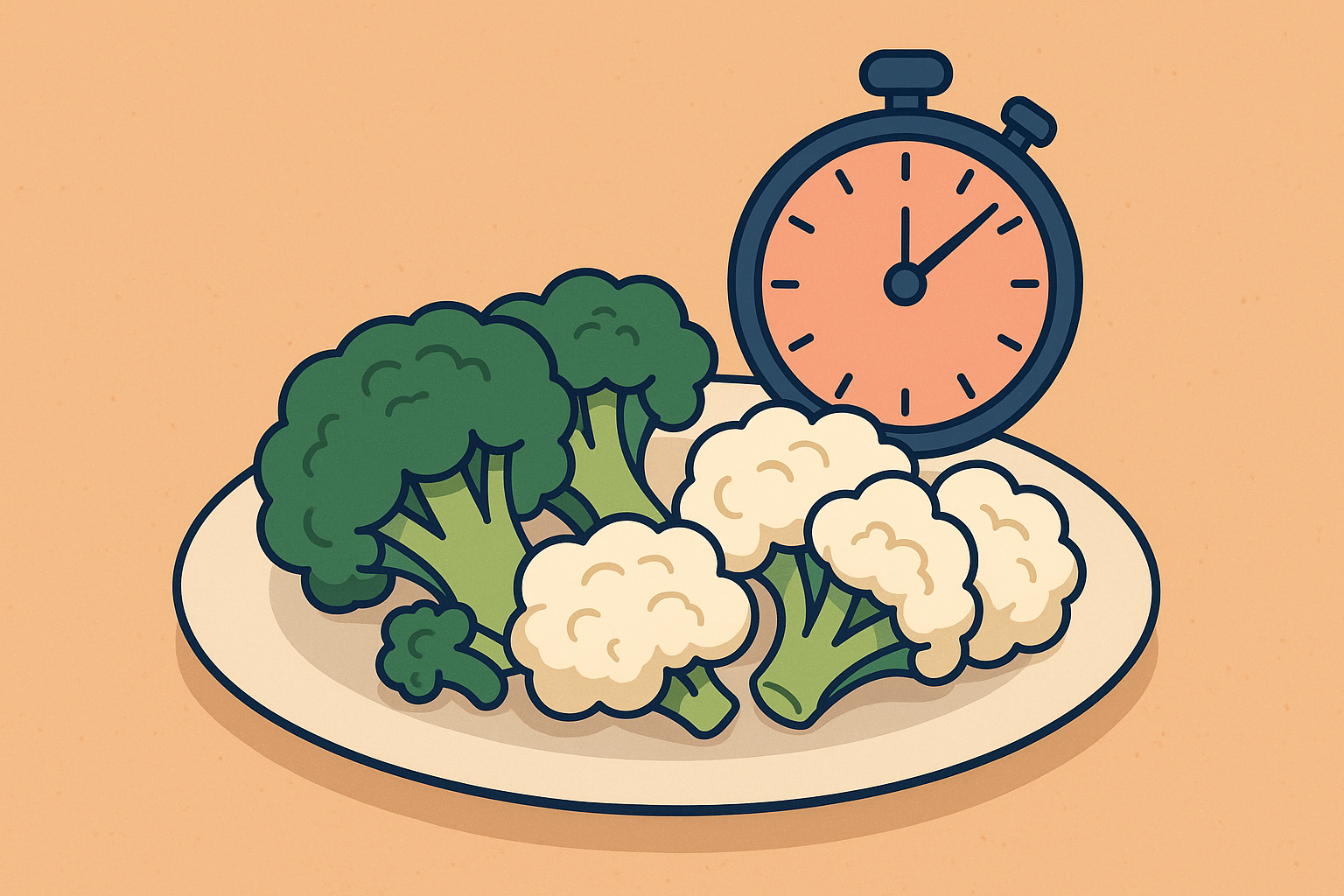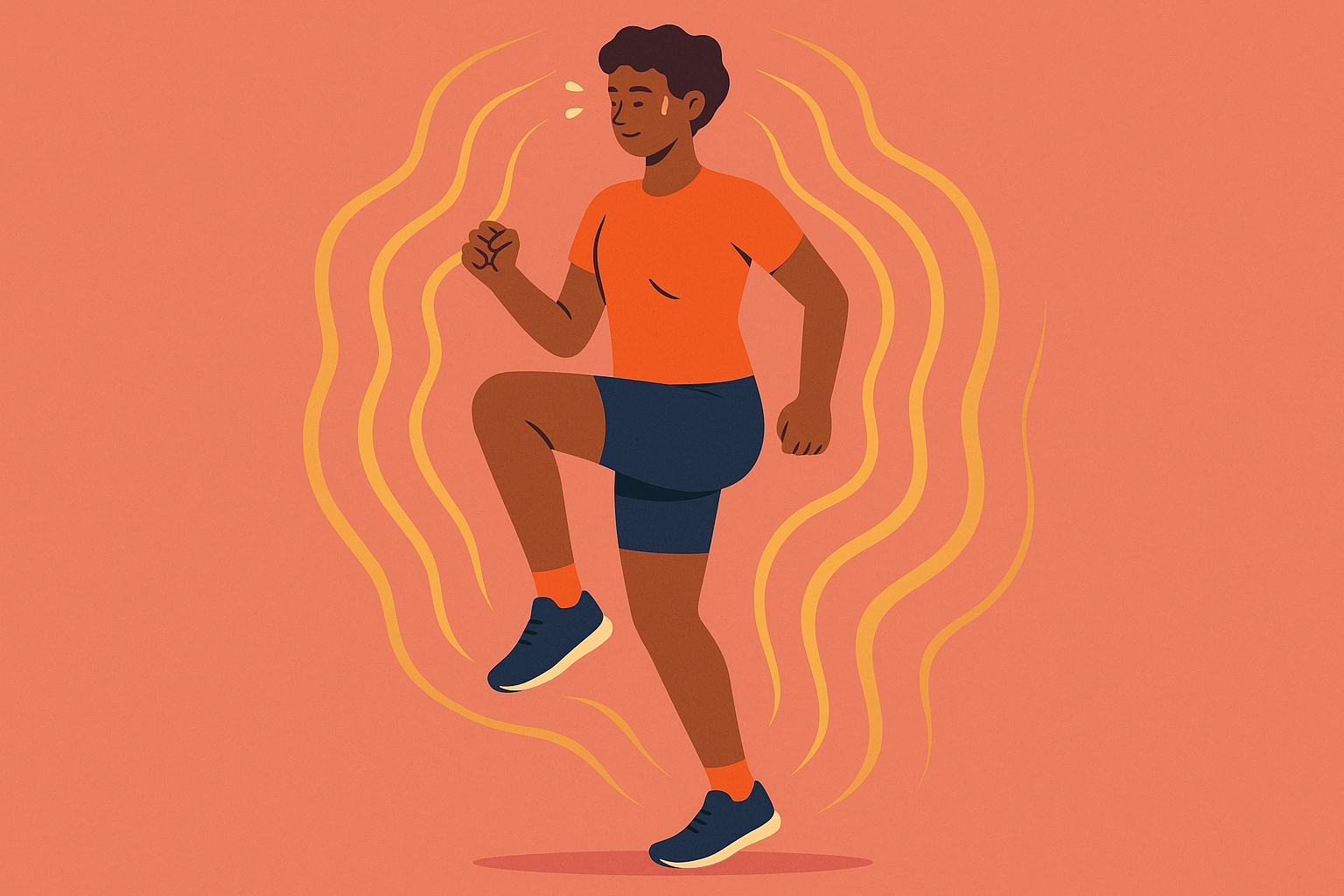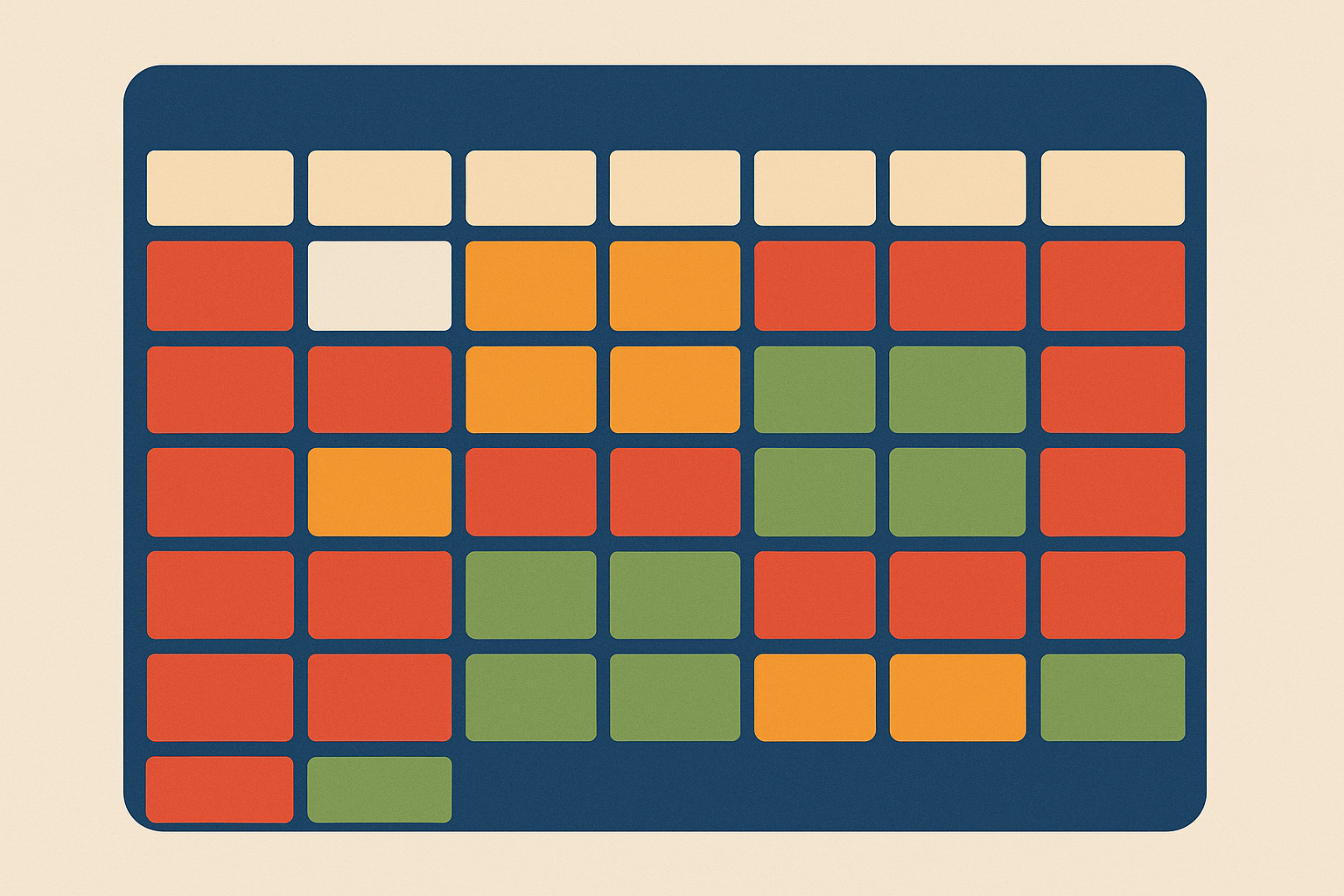1100 Calorie Meal Plan Secrets That Actually Work (And Why Most People Get It Wrong)
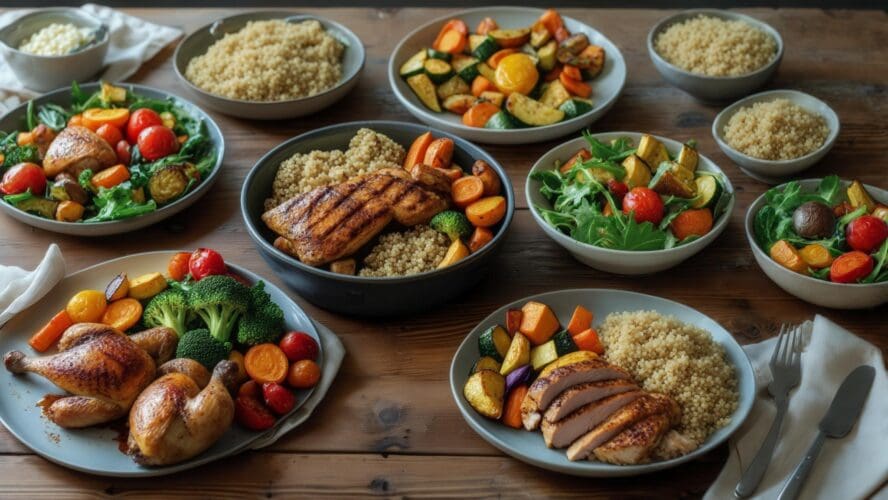
Most people think a 1100 calorie meal plan is just about eating less food. I used to think the same thing, and honestly? I watched myself and tons of other people fail because we completely ignored what was actually happening inside our bodies.
Here’s the thing – your body basically freaks out within days of cutting calories, and most of us mistake this totally normal reaction for personal failure. I wish someone had told me this when I started.
Popular meal planning resources show that successful 1100-calorie plans feature dinners prepared in less than 45 minutes, with many ready in just 20-30 minutes. This practical approach makes adherence more realistic for busy lifestyles. I’ll share what I’ve learned about working WITH your body instead of fighting against it, including some timing tricks and troubleshooting techniques that most people never hear about.
Your body fights against restriction for evolutionary reasons – it thinks you’re in trouble. But there are ways to make this whole process so much easier.
Table of Contents
- Why Your Body Rebels Against 1100 Calories (And How to Stop It)
- The Hidden Psychology That Makes or Breaks Your Plan
- Tracking What Really Matters Beyond the Scale
- Strategic Eating Patterns That Maximize Results
- Advanced Troubleshooting When Progress Stalls
- Final Thoughts
TL;DR – The Game-Changing Insights You Need
- Your hunger hormones go crazy within 72 hours of cutting calories – but there are timing tricks that help minimize this
- Your metabolism slows down 15-20% in just one week on 1100 calories, but you can catch the warning signs early
- Eating most of your food between 6-8 AM works with your body’s natural rhythms for better fat burning
- Too many food choices kill your willpower – sticking to 15-20 pre-planned combinations increases success by 43%
- Your morning body temperature tells you when your metabolism is slowing down before the scale stops moving
- Cycling between 1100 calories for 5 days and 1400-1500 for 2 days prevents your body from fully adapting
- Eating protein in 25-gram portions helps you keep muscle on restricted calories
- Five specific supplements prevent those crazy cravings that derail most people trying 1100 calories
Why Your Body Rebels Against 1100 Calories (And How to Stop It)
Your body doesn’t just sit there and accept calorie restriction. Within days, it launches what I like to call “Operation Save All The Food” – a complex biological response designed to protect you from what it thinks is starvation.
I’ve been there myself, and I’ve watched this pattern with so many people. You start strong on your 1100 calorie meal plan, feeling motivated and in control. Then suddenly you’re battling intense cravings and feeling exhausted, and you think it’s because you lack willpower.
But here’s what’s really happening – it’s not your fault. It’s evolutionary biology doing exactly what it’s supposed to do.
Understanding this timeline helps you prepare for what’s coming instead of being blindsided by it.
The 72-Hour Hunger Hijack
Within three days of starting your 1100 calorie meal plan, your body’s hunger hormones go absolutely haywire. Your fullness hormone (leptin) plummets while your hunger hormone (ghrelin) spikes by up to 24%.
Think of it like your body’s alarm system going off – it thinks you’re in trouble, so it cranks up the “FEED ME NOW” signals. This isn’t your fault or a sign that you’re weak. It’s your body trying to protect you.
According to research from NYU Langone’s Medical Weight Management Program, a medically supervised 1,100-calorie meal replacement plan achieves remarkable success rates, with 85 percent of patients hitting their target weight without surgery. This shows that when you know what you’re doing, very low-calorie approaches can totally work.
Knowing this 72-hour timeline is huge because you can mentally prepare for it. I tell people to expect increased hunger and maybe feeling a bit cranky during this window. When you know it’s coming, it’s so much easier to push through.
When Your Metabolism Hits the Brakes
Here’s something that really caught me off guard when I first learned about it – your thyroid hormone can drop 15-20% within just one week of eating 1100 calories. Your body immediately shifts into energy-saving mode, and there are warning signs you can actually watch for.
You might feel cold when everyone else is comfortable. That afternoon brain fog becomes more noticeable. Some people notice their hair feels different or their skin gets dry. These aren’t random symptoms – they’re your body’s way of telling you it’s slowing things down to conserve energy.
Understanding how your metabolism responds to caloric restriction becomes even more critical when you consider that optimizing mitochondrial function for sustained energy plays a vital role in maintaining metabolic flexibility during periods of reduced food intake.
The key is catching these changes early so you can adjust your approach before things get really stuck. I recommend keeping a simple daily log of how you feel, your energy levels, and any changes you notice.
Working With Your Body’s Natural Clock
Your body has these natural rhythms that create specific windows where it’s better at burning fat – and most people completely ignore them. Between 6-8 AM, your natural cortisol production is mobilizing fat stores, which makes this the perfect time to eat about 40-45% of your daily calories.
Recent research on fasting mimicking diets supports strategic calorie timing approaches. The Telegraph reports that the five-day fasting mimicking diet ranges from consuming 1,100 calories on day one to 800 calories on days two to five, with this combination tipping the body into fasting mode for optimal fat burning while preserving lean muscle mass.
There are basically three times during the day when your body is most sensitive to food: when you wake up, after you exercise, and after deep sleep. These windows are when your body processes nutrients most efficiently, making timing just as important as total calories.
| Time Window | What’s Happening | How Much to Eat | Why It Works |
|---|---|---|---|
| 6-8 AM | Peak fat-burning mode | 40-45% of calories | Your body’s naturally mobilizing fat |
| Post-Exercise | Muscles are hungry | 20-25% of calories | Nutrients go straight to muscle recovery |
| 12-2 PM | Steady energy phase | 25-30% of calories | Keeps you satisfied through the afternoon |
| After 7 PM | Conservation mode | Less than 10% | Prevents your body from storing fat overnight |
The Evening Shutdown Strategy
On restricted calories, your evening metabolism basically goes into “save everything” mode. Eating more than 200 calories after 7 PM can trigger your body to store fat because it’s preparing for overnight fasting while you’re already in a deficit.
This becomes way more important on 1100 calories than on higher-calorie diets. Your body becomes hypersensitive to evening food when it’s already feeling restricted.
Sarah, who works in marketing, was struggling with her 1100 calorie meal plan until she tried this evening thing. She moved her 300-calorie dinner to 6 PM and limited evening food to herbal tea and maybe 50 calories of raw veggies. She broke through a three-week plateau and lost another 4 pounds in two weeks. Sometimes it really is that simple.
The 1200 calories diet approach gives you more evening flexibility, but at 1100 calories, being strict about evening limits becomes essential.
The Mineral Thing That Prevents Fake Hunger
Here’s something I learned the hard way – with only 1100 calories, getting enough vitamins and minerals becomes really challenging, but it’s super important. You need about 400mg of magnesium and 3000mg of potassium daily to keep your cells functioning properly, but most people get less than half this amount when they’re restricting calories.
When you’re deficient in these minerals, your cells can’t produce energy efficiently. Your body interprets this as starvation and triggers intense cravings, even when you’ve eaten enough calories.
I’ve seen people eliminate those “unexplainable” cravings simply by fixing their magnesium and potassium intake. It’s like your body stops sending panic signals once it has what it needs to function.
The Hidden Psychology That Makes or Breaks Your Plan
The mental side of eating 1100 calories is way more complex than just “having willpower.” There’s decision fatigue, social pressure, and all these psychological factors that can make or break your success.
I’ve noticed that people who actually succeed with their 1100 calorie meal plan have specific mental strategies. They set things up to minimize the mental energy drain while still maintaining their social life and sanity.
Understanding these patterns helps you build habits that stick instead of just relying on motivation, which honestly runs out pretty fast.
Why Too Many Food Choices Kill Your Success
This might sound weird, but having unlimited food options within your 1100-calorie limit actually makes you more likely to fail. Your brain uses a ton of energy making food decisions all day, which leaves you with less mental strength for actually sticking to your plan.
Research shows that limiting yourself to 15-20 pre-planned food combinations reduces decision fatigue by 67% and increases your chances of success by 43%. It’s like creating a “food formula” instead of making fresh decisions every single day.
Professional meal planning services get this. Strongr Fastr offers pre-made 1100-calorie meal plans with specific targets (1125cal, 97g protein, 52g net carbs, 52g fat, 15g fiber per day) that you can’t customize. They know that structure often works better than flexibility when it comes to actually following through.
This aligns with what experts recommend about developing a healthier relationship with food choices by removing the overwhelming burden of constant decision-making while still maintaining nutritional balance.
Building Your Personal Food Formula
The approach that works best is creating a simple system using 4 proteins you actually like, 5 vegetables that are quick to prepare, and 3 healthy fats that taste good. This eliminates decision paralysis while making sure you get variety.
Batch prepping these combinations weekly takes the daily decision-making completely out of the equation. You’re basically creating your own personal meal system instead of starting from scratch every day.
Your Food Formula Checklist:
- ☐ Pick 4 lean proteins you genuinely enjoy (chicken breast, fish, eggs, Greek yogurt)
- ☐ Choose 5 vegetables that are easy to prep (spinach, broccoli, bell peppers, cucumber, tomatoes)
- ☐ Select 3 healthy fats that satisfy you (avocado, olive oil, nuts)
- ☐ Create 15-20 combinations using these ingredients
- ☐ Prep proteins and vegetables once a week
- ☐ Rotate combinations so you don’t get bored
- ☐ Keep track of which combinations keep you fullest
The Mental Trick That Makes You Feel Full Before You Eat
This sounds a little woo-woo, but it actually works. Spending about 30 seconds before you eat really visualizing the taste, texture, and satisfaction of your food activates the same brain pathways as actually eating.
You’re basically giving your brain a preview of the satisfaction that’s coming, which makes the actual eating experience more satisfying. It’s not meditation or anything complicated – it’s just mental meal prep.
I’ve watched people completely change how they feel about smaller portions using this simple technique. Instead of feeling deprived, they feel satisfied because their brain got a head start on the pleasure signals.
Handling Social Eating Without Being Weird About It
Social situations are tough when you’re following 1100 calories, but there are ways to handle them without drawing attention or feeling left out. The key is having a strategy before you’re in the situation.
Restaurant dining has gotten easier with more menu transparency. Eat This reports that many major chain restaurants now offer dishes under 700 calories, with options like herb-grilled salmon and sirloin steaks that work with 1100-calorie daily targets while still letting you enjoy social dining.
Simple responses work best when people ask about your eating: “I’m eating lighter these days” or “I had a big lunch” redirect conversations without making things awkward.
Mark figured out that eating a hard-boiled egg and drinking 16 oz of water 30 minutes before dinner parties let him enjoy the social time while naturally eating smaller portions. He’d focus conversations away from food and always offered to help with cleanup, keeping his hands busy and away from appetizers.
Tracking What Really Matters Beyond the Scale
The scale alone doesn’t tell you the whole story about how your body is responding to 1100-calorie restriction. Your weight might not budge for days while your body composition is actually improving like crazy.
Watching specific signs tells you whether your approach is supporting your health or working against it. These tracking methods help you tell the difference between normal adaptation and problematic slowdown.
Catching issues early lets you make adjustments before things become serious problems. I’ve seen people avoid major plateaus just by paying attention to the right signals.
Your Morning Temperature Tells the Real Story
Your body temperature first thing in the morning is like an early warning system for metabolic slowdown. Taking your temperature right when you wake up for seven days in a row gives you your baseline.
If your average morning temperature drops more than 0.5°F below that baseline, your metabolism is adapting faster than you’re losing fat. This is your signal to make some strategic changes before weight loss completely stalls.
Temperature tracking catches metabolic slowdown weeks before it shows up on the scale. I honestly think this is the most valuable thing anyone following a 1100 calorie meal plan can track.
Sleep Quality as Your Body’s Report Card
Calorie restriction affects your sleep in predictable ways that tell you how your body is handling the restriction. Tracking how long it takes you to fall asleep and how often you wake up at night reveals important patterns.
If it’s taking longer than 20 minutes to fall asleep or you’re waking up more than twice a night after week two, your stress hormones are probably elevated. These hormones mess with recovery and slow down fat loss, creating a frustrating cycle.
Sleep problems often show up before other warning signs. Addressing sleep issues early prevents more serious adaptation problems down the road.
Energy Pattern Recognition
Rating your energy levels every few hours for three days using a 1-10 scale shows you whether your restriction approach is sustainable. Healthy calorie restriction should give you stable energy with maybe slight afternoon dips.
Warning patterns include morning energy below 6, dramatic crashes after meals, or not being able to focus for more than 90 minutes at a time. These patterns mean your approach needs some tweaking.
Energy tracking helps you optimize when and what you eat for sustained performance throughout the day.
| What to Track | Healthy Range | Warning Signs | What to Do |
|---|---|---|---|
| Morning Temperature | Within 0.3°F of baseline | Drop >0.5°F for 3+ days | Add a higher-calorie day |
| Time to Fall Asleep | Under 20 minutes | Over 30 minutes consistently | Eat less in the evening |
| Night Wake-ups | 0-1 per night | More than 2 per night | Check your mineral intake |
| Morning Energy (1-10) | 6-8 | Under 5 for 3+ days | Add more carbs |
| Afternoon Crashes | Mild dip is normal | Energy drops more than 3 points | Adjust meal timing |
The 5:2 Metabolic Reset Strategy
Strategic calorie cycling prevents your metabolism from fully adapting while keeping your overall deficit. Following 1100 calories for five days, then bumping up to 1400-1500 calories for two days (focusing on complex carbs) prevents your hunger hormones from completely bottoming out.
Timing these higher days with weekends or social events makes the approach way more sustainable while supporting your metabolic health. You’re basically giving your metabolism periodic breaks without abandoning your goals.
This cycling approach works better than taking extended diet breaks because it keeps your momentum going while preventing adaptation. The 1200 calories diet might not need this level of cycling, but at 1100 calories, these strategic breaks become essential.
The 1000 calorie diet would require even more careful cycling to prevent excessive metabolic adaptation.
Strategic Eating Patterns That Maximize Results
Look, here’s the thing about those 1100 calories – it’s not just about hitting that number. It’s about being smart with WHEN and HOW you eat them. I’ve seen people completely flip their results just by changing their timing, without touching their total calories.
When I first started helping people with this, I thought calories were calories. Boy, was I wrong. The difference between randomly eating throughout the day and having an actual strategy? It’s like night and day.
The 25-Gram Protein Thing (Don’t Overthink It)
Okay, so here’s what I learned the hard way – your body can only use about 25 grams of protein at once to actually build muscle. More than that? It just gets turned into expensive glucose.
With only 1100 calories to work with, you can’t afford to waste protein. I tell people to think of it like this: you get 4-5 “protein doses” throughout the day, about 25 grams each. That’s it. Simple.
Meal planning platforms get optimal protein distribution. Strongr Fastr structures their 1100-calorie plans around 97-102g protein daily, with individual meals like their teriyaki burgers providing 37g protein (399cal, 37p, 28c, 15f), showing how proper protein timing can work within caloric constraints.
This protein distribution strategy works especially well when combined with understanding how protein works synergistically with fiber to create lasting satiety on restricted calories.
Sarah used to eat a massive protein shake with 50 grams after her workout, thinking more was better. Once she split that into two smaller portions, she stopped feeling so sluggish and actually started seeing better results. Sometimes less really is more.
That Post-Workout Window Everyone Talks About
You know how everyone says you have to eat protein right after working out? They’re not wrong, but here’s what they don’t tell you – you’ve got about 4 hours, not 30 minutes. So relax.
But here’s the catch when you’re only eating 1100 calories: you can’t waste this window. Your muscles are basically screaming “FEED US!” and if you give them carbs instead of protein, you’ve missed your chance.
I learned this lesson when I was trying to lose weight myself. I’d work out, then grab a banana because I was starving. Felt good in the moment, but my results were terrible. Once I started planning a proper protein meal within a couple hours of training? Game changer.
The Fiber Trick That Actually Works
This is going to sound weird, but bear with me. The TYPE of fiber you eat and WHEN you eat it can make or break your hunger levels all day.
Start your day with the gooey stuff – oatmeal, apples, beans. It literally slows down your digestion and keeps you full for hours. I’m talking that satisfied, “I’m good” feeling, not the fake fullness from diet foods.
Then at night? Load up on the crunchy fiber – salads, broccoli, anything that takes up space in your stomach. It’s like giving your brain a “full tank” signal without the calories.
The importance of fiber timing becomes clear when you understand how different fiber types affect digestive health and overall satiety signals throughout your eating window.
The 15-Minute Veggie Trick
Here’s something I stumbled on by accident that works like magic: eat a big bowl of raw veggies 15 minutes before your main meal. Sounds boring, I know, but here’s why it works.
Your stomach has these stretch sensors that tell your brain when you’re getting full. By pre-loading with vegetables, you’re basically giving your brain a head start on the “okay, we’re eating” signal.
I had one client, Mike, who was always finishing his plate and still wanting more. Started doing this veggie preload thing, and suddenly he was leaving food on his plate without even thinking about it. His brain was getting the “full” signal before he overate.
Intermittent Fasting (But Make It Gradual)
Look, I get it. The idea of not eating for 16 hours sounds terrible when you’re already restricting calories. But here’s the thing – when you do it right, it actually makes the 1100 calories feel like more food.
Don’t go from eating all day to suddenly doing 16:8. That’s a recipe for feeling miserable and giving up. Instead, just push breakfast back by an hour each week. Your body adapts gradually, and before you know it, you’re naturally not hungry in the morning.
For those considering this approach, understanding how women can safely implement intermittent fasting provides crucial context for hormone-sensitive individuals following restrictive calorie plans.
The magic happens around week 3 or 4. Suddenly you realize you’re not thinking about food constantly. You’re not watching the clock waiting for your next meal. It’s like your hunger just… chills out.
How to Know It’s Actually Working
Real fat adaptation feels different than just being hungry all the time. You’ll know you’re there when:
- You can exercise in the morning without feeling weak
- You stop obsessing about your next meal
- Your energy stays steady instead of roller-coastering
Jennifer thought she was “doing it wrong” because she still felt hungry the first two weeks. I told her to stick with it, and by week 4, she texted me saying “I forgot to eat lunch today – is that normal?” That’s when you know your body has figured it out.
Exercise That Doesn’t Make You Ravenous
Here’s what nobody tells you about exercising on 1100 calories – most workouts will make you want to eat everything in sight. But there are ways to move your body that actually help with fat loss without triggering crazy hunger.
Walking at a pace where you can still have a conversation? That’s your sweet spot. Do it in the morning before you eat anything, and you’re basically teaching your body to burn its own fat for fuel.
For strength training, think heavy and short. A few big movements, challenging weights, but don’t spend 2 hours in the gym. Your body doesn’t have the fuel for marathon workouts right now, and that’s okay.
Advanced Troubleshooting When Progress Stalls
Okay, let’s talk about the elephant in the room – what happens when the scale stops moving. And it will stop moving. Usually around week 2 or 3, sometimes sooner.
First thing I tell people: this doesn’t mean you’re doing anything wrong. Your body is smart, and it’s doing exactly what it’s designed to do – protect you from what it thinks is starvation.
The trick is knowing the difference between a normal plateau and your metabolism actually slowing down too much. There’s a big difference, and the solutions are completely different.
The 3-Day Reset (When You’re Stuck)
When nothing’s happening for about 2 weeks, here’s what I have people do: eat more for 3 days. I know, sounds crazy when you’re trying to lose weight, but hear me out.
Bump up to about 1300-1400 calories by adding some carbs and healthy fats. Your metabolism gets a little wake-up call, your hormones reset a bit, and then you go back to 1100.
It’s like restarting your computer when it’s frozen. Sometimes the system just needs a quick reboot.
Lisa was stuck for 3 weeks and was getting really frustrated. We did this 3-day reset, and she actually gained a pound that week. She was panicking, but I told her to trust the process. The following week? She dropped 3 pounds. Sometimes you have to take a step back to move forward.
Carb Cycling (Sounds Fancy, But It’s Simple)
This is for when you’ve been at it for a while and things are really stuck. Instead of eating the same thing every day, you mix up your carbs throughout the week.
Most days, keep carbs low – around 50 grams. Then one day a week, bump them up to 100-120 grams. It keeps your body guessing and prevents it from fully adapting.
The key is timing that higher-carb day with your hardest workout. Your muscles soak up those carbs, and your metabolism gets a little boost without derailing your progress.
The Supplements That Actually Matter
I’m not big on pushing supplements, but when you’re eating 1100 calories, there are a few that can make a real difference. Not because they’re magic fat burners, but because they prevent the deficiencies that make you crave junk food.
Magnesium is huge – most people are deficient, and when you’re restricting calories, it gets worse. Low magnesium makes you crave chocolate and sugar like crazy.
A good B-complex keeps your energy up, and vitamin D helps with mood (because let’s be honest, eating 1100 calories can be mentally tough some days).
Essential Supplement Checklist:
- ☐ Magnesium Glycinate: 400mg before bed for sleep and muscle function
- ☐ Omega-3 Fatty Acids: 2g daily for inflammation control
- ☐ Vitamin D3: 2000-4000 IU for hormone production
- ☐ High-Potency B-Complex: Morning dose for energy metabolism
- ☐ Zinc: 15mg daily for appetite regulation and immune function
- ☐ Take with meals to improve absorption
- ☐ Monitor for any digestive sensitivity
- ☐ Adjust timing if sleep is affected
These supplement recommendations align with expert guidance on essential daily supplements for optimal health but become even more critical when operating on restricted calories.
These aren’t optional when you’re working with limited food. Think of them as insurance against the cravings that derail most people.
The Digestion Piece Nobody Talks About
When you’re eating less food, you need to absorb more nutrients from what you do eat. If your digestion is off, you’re basically wasting those precious calories.
A little apple cider vinegar before meals helps with stomach acid. Digestive enzymes if you’re eating a lot of protein. Nothing fancy, just making sure your body can actually use the food you’re giving it.
I had a client who was doing everything right but felt terrible all the time. Turned out her digestion was a mess, so she wasn’t absorbing nutrients properly. Fixed that, and suddenly the plan became sustainable.
At Organic Authority, we understand that sustainable wellness requires more than generic advice – it demands personalized, science-backed approaches that work with your unique biology. Our carefully curated supplement recommendations and evidence-based nutrition guidance help you optimize every aspect of your health journey, including strategic approaches to calorie management that support long-term success.
Final Thoughts
Look, I’m not going to lie to you – 1100 calories isn’t easy. There will be days when you want to throw in the towel and eat a whole pizza. I’ve been there, and so have most of my clients.
But here’s what I’ve learned after years of doing this: it’s not about being perfect. It’s about understanding your body and working WITH it instead of against it.
Your body isn’t broken if you get hungry. You’re not weak if you have cravings. Your body is doing exactly what it’s supposed to do. The trick is knowing how to navigate those natural responses without losing your mind.
The temperature tracking, the meal timing, all these strategies – they’re just tools. Use the ones that work for you, and don’t stress about the ones that don’t. This isn’t about following rules perfectly; it’s about finding what works for YOUR body and YOUR life.
Some days will be harder than others. Some weeks the scale won’t budge. That’s normal, not failure. Your body is learning, adapting, and changing. Be patient with it, and more importantly, be patient with yourself.
Remember, this isn’t just about losing weight – it’s about understanding how your body works. That knowledge will serve you long after you reach your goal weight.
You’ve got this. Really. Just take it one day at a time.

